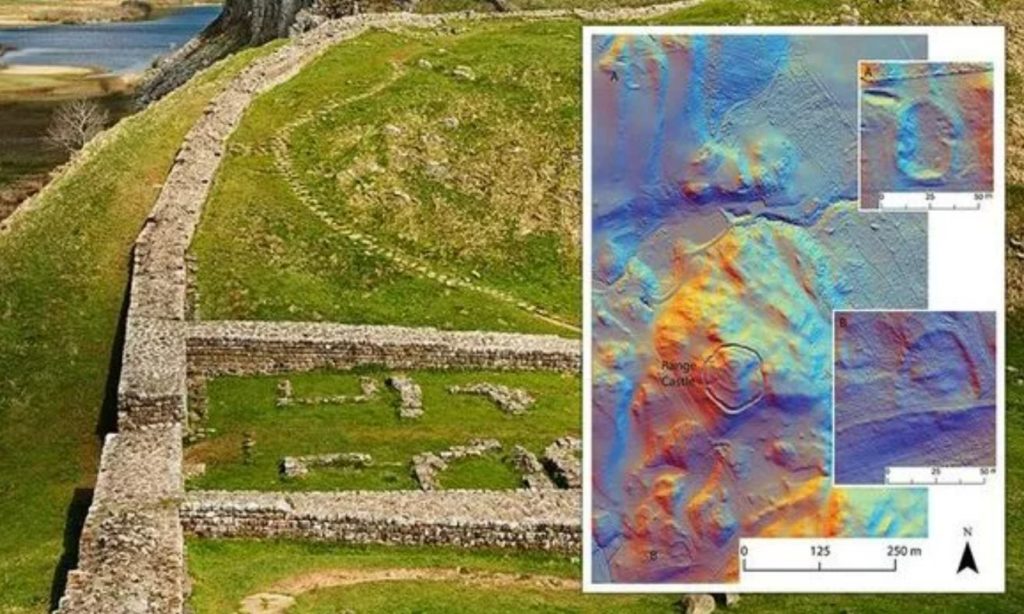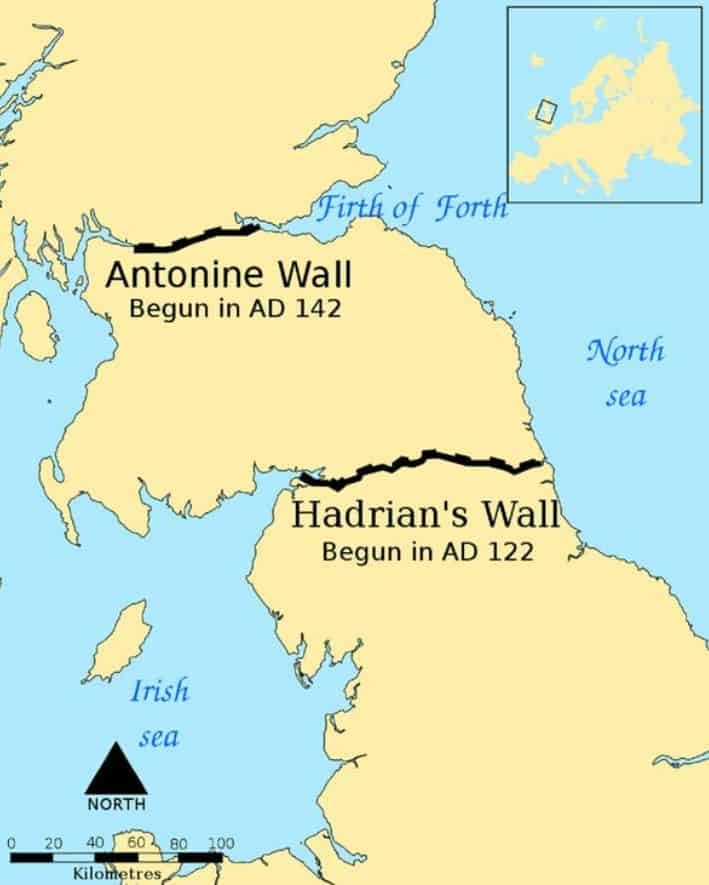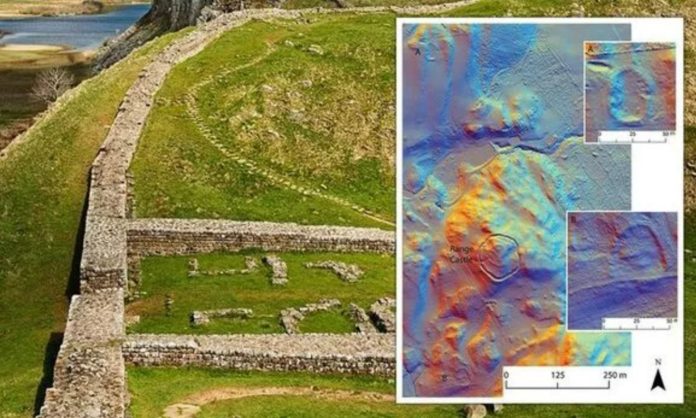Archaeologists digging the region north of Hadrian’s Wall have discovered more than a hundred indigenous Iron Age sites dating to the Roman conquest of Britain.
The construction of Hadrian’s Wall, Britain’s biggest Roman archaeological site at 118 kilometers (73 miles) in length, began in 122 A.D., with the structure serving as the northernmost border of the Roman empire for roughly two decades. After making further conquests north of Hadrian’s Wall in AD 142, the Romans constructed a second defensive wall, the Antonine Wall, a turf-on-stone fortification that spanned from the Firth of Forth to the Firth of Clyde. Following pressure from the Caledonian tribes, this second wall was abandoned eight years later, and the empire’s frontier was drawn back south to Hadrian’s Wall.
While significant archaeological research has been done in the area between these two walls, most of it has been done from a Roman perspective, looking at the camps, forts, roadways, and walls that the empire’s armies used to dominate northern Britain.

The current study, on the other hand, is part of an effort to learn more about the lives of the indigenous peoples who lived in this frontier territory.
“This is one of the most exciting regions of the Empire, as it represented its northernmost frontier,” said paper author and archaeologist Dr Manuel Fernández-Götz of the University of Edinburgh.
“Scotland was one of very few areas in Western Europe over which the Roman army never managed to establish full control,” he noted.
Dr. Fernández-Götz and colleagues are analyzing the ancient history of a portion of Britain that stretches from Durham to the southern Scottish Highlands, around 25 miles south of Hadrian’s Wall and 25 miles north of the Antonine Wall.
The first phase of their research focused on the area near Burnswark hillfort in Scotland, which claims to have the highest concentration of Roman projectiles ever discovered in Britain, demonstrating the firepower at Rome’s disposal.

The scientists next looked beyond Burnswark, looking at laser-scanning, or “Lidar,” data from the adjacent 580 square miles.
Despite the fact that part of this area had already been intensively investigated, the researchers discovered 134 previously unrecorded Iron Age towns, bringing the total number known from the region to over 700.
Although archaeologists were already aware of many of the bigger sites in the studied region, the discovery of many tiny farmsteads by the survey is a useful discovery.
These communities are more representative of the conditions under which the indigenous population would have lived.
Furthermore, the fact that the sites were spread relatively consistently across the ancient landscape — with dense clusters in some locations — suggests a highly organized habitation plan, according to the researchers.
“The important thing about the discovery of many previously unknown sites is that they help us to reconstruct settlement patterns,” explained paper author and archaeologist Dr. Dave Cowley of Historic Environment Scotland.
“Individually they are very much routine, but cumulatively they help us understand the landscape within which the indigenous population lived.”
After completing their initial investigation, the researchers are now employing different geophysical surveying techniques to investigate some of the most prominent discoveries in greater depth.
They’re also hoping to use radiocarbon dating to get a better idea of when the sites were occupied.
They expect to acquire a better understanding of how life changed before, during, and after the Roman occupation of northern Britain as a result of this, they added.
The complete study results were published in the journal Antiquity.
Source: 10.15184/aqy.2022.47
Image Credit: Getty
You were reading: Breakthrough Research Uncovers A Hidden Part of Britain
